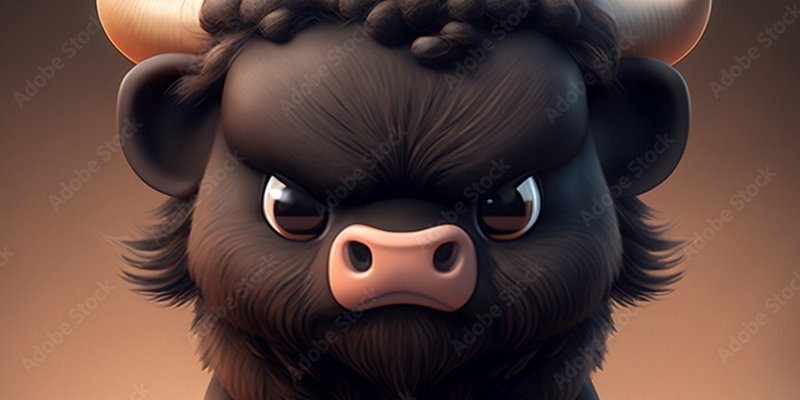
Buffalos, particularly the American bison, are not just roaming herds of muscle. They display patterns of behavior and social structures that hint at a kind of smarts. You might be wondering, how does their intelligence stack up? Are they capable of problem-solving, or do they simply follow their instincts? Let’s dive into the cognitive world of these magnificent animals and explore what makes them tick.
Understanding Buffalo Behavior
Buffalos are social animals that live in herds, which brings a unique dynamic to their behavior. Just like a close-knit community, these herds provide safety and support. When there’s a threat, such as a predator nearby, buffalos will instinctively gather together, showcasing a fascinating aspect of their social intelligence. This behavior isn’t just about instinct; it requires an understanding of their surroundings and the ability to communicate through body language.
Interestingly, each herd has its own hierarchy, where certain individuals often take on the role of leaders. These leaders guide the group to food and water sources, showing that buffalos can make decisions based on their knowledge of the land. It’s similar to how neighborhoods work; some residents know the best routes and resources and share that knowledge with others. This communal behavior is a strong indicator of their cognitive abilities.
You might also notice that buffalos engage in playful activities, especially the younger ones. They’ll chase each other or roll in the dirt, which is important for their social development. This play is not merely fun; it fosters bonds and helps younger buffalos learn survival skills. Just like kids playing tag on the playground, buffalos use their interactions to strengthen relationships within the herd.
Decision Making and Problem-Solving Skills
Buffalos exhibit a surprising amount of problem-solving ability. For instance, when faced with obstacles like fences, they don’t just charge blindly; they often take a moment to assess the situation. This pauses allows them to look for alternate routes or ways to overcome the barrier. It’s as if they’re weighing their options to find the best path forward.
An example would be when they encounter a stream. Instead of just jumping in, they often survey the current and depth before entering. This behavior indicates that buffalos can evaluate risks, much like when we decide whether to cross a busy road or wait for a safer moment. This careful deliberation highlights a level of awareness that goes beyond mere instinct.
Another fascinating aspect is their memory. Buffalos can remember locations of food sources and water, sometimes even revisiting them after seasons. Similar to how we remember our favorite cafes or parks, these memories help buffalos thrive in different environments. This knowledge is crucial for their survival, especially during harsh seasons when resources can become scarce.
Communication Among Buffalos
Buffalos have a range of vocalizations and body language to communicate with one another. They grunt, bellow, and even make high-pitched sounds to alert each other to danger. This level of communication suggests a social structure that relies on cooperation. Think of it as a team of coworkers strategizing to ensure everyone is on the same page.
In addition to vocal sounds, buffalos also use their body language to express feelings. For instance, when a buffalo lowers its head or raises its tail, it can indicate agitation or fear. Observing these cues helps other herd members understand when it’s time to be alert or to calm down. It’s a fascinating system that showcases their social intelligence.
During migration, communication becomes even more critical. Buffalos must work together to navigate large distances. They often follow the lead of older, more experienced members of the herd. This reliance on shared knowledge is akin to how we might trust a seasoned traveler to guide us on a road trip. It emphasizes their capability for learning from one another.
Emotional Intelligence in Buffalos
You might not immediately think of buffalos as having feelings, but they do display signs of emotional intelligence. For example, mother buffalos are known to be incredibly protective of their calves. When they feel their young are threatened, they can become fiercely aggressive, showing a deep bond that is built on care and nurture.
Buffalo herds also exhibit grieving behaviors. When a member of the herd passes away, other buffalos may linger near the body or exhibit signs of distress. This shows that they possess a basic understanding of loss, much like us. It’s heart-wrenching but also a testament to their emotional depth.
Moreover, buffalos can experience a range of emotions, from joy to frustration. When they play or engage in social bonding, their energetic displays can reflect happiness. Just like how pets can express joy with wagging tails or playful antics, buffalos show their moods through their actions and interactions with others.
Learning and Adaptation
One of the most intriguing aspects of buffalos is their ability to learn and adapt to their environment. Over time, they’ve learned specific strategies to deal with changing conditions. For instance, as they migrate seasonally, they can adjust their routes based on food availability or weather changes.
Buffalos can also be conditioned to avoid certain areas that may pose danger. If they encounter predators in a particular spot, they will learn to bypass that area in the future. It’s similar to us learning to avoid traffic jams on our daily commutes. This adaptability ensures that buffalos can thrive in various habitats, from grasslands to forests.
Furthermore, buffalo calves learn survival techniques from their mothers and the herd. Young buffalos watch how adults interact with their environment, picking up crucial skills for finding food and staying safe. This form of learning—modeling after others—is a significant part of how they develop their intelligence.
How Smart Are Buffalos Compared to Other Animals?
When comparing buffalos to other animals, it’s clear that their intelligence is unique. While they may not be as renowned for their problem-solving skills as dolphins or elephants, buffalos hold their own in the animal kingdom. Their social structures, communication methods, and emotional intelligence reveal a layer of cognitive ability that’s impressive in its own right.
For instance, while some primates are known for their advanced tool use, buffalos exhibit problem-solving in more practical, instinctual ways. They may not be manipulating objects to achieve a goal, but their ability to work together and communicate effectively ensures their survival, which is a powerful form of intelligence.
In terms of emotional intelligence, buffalos may rival some of the more social species out there. Their strong bonds within the herd and capacity for feelings of grief and care set them apart from many other large herbivores.
The Importance of Understanding Buffalo Intelligence
Understanding how smart buffalos are isn’t just a curiosity; it has real implications for conservation and animal welfare. Recognizing their cognitive abilities can lead to better management practices in habitats and ranching. For example, knowing that buffalos can learn and remember can help create environments that promote their natural behaviors.
Additionally, this knowledge can foster respect for buffalos. When people see them as intelligent beings, it can change how they relate to these animals, leading to better treatment in farming, ranching, and conservation efforts. Awareness can drive positive change, encouraging more people to advocate for the protection of buffalo habitats.
In short, buffalos are more than meets the eye. Their social structures, communication skills, and emotional depth highlight a unique intelligence that deserves recognition. By understanding and appreciating their smarts, we can work toward ensuring they flourish in their natural environments.
In conclusion, buffalos embody a blend of instinct and intelligence, showcasing impressive cognitive abilities and emotional depth. They teach us that intelligence can appear in various forms, each deserving respect and understanding. So next time you see a buffalo grazing peacefully, take a moment to appreciate their rich inner lives and the clever ways they navigate the world.

